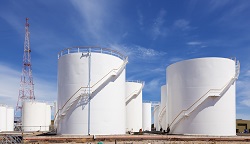Using ultrasound to enhance wine production
Recent research has highlighted how certain novel techniques can accelerate the ageing process. The high pressures and temperatures need to be applied at just the right levels, though, in order to maintain the quality of the wine. The potential marks a welcome development for wine producers eager to bring out a product with an extended period of peak taste and bouquet, without the lengthy natural ageing process and storage time. Building on such research, the 'Novel method for assisting and accelerating the aging process of wine' (ULTRAFINEWINE) project aimed to identify the best parameters for the ultrasound technology to realise nearly the same effect as natural ageing. Researchers first performed a thorough validation of the ultrasound technology, and tested its applicability in the ageing of various types of wine under different operating conditions. Sensory analysis was used to evaluate the efficiency of the process, while analysis of phenolic compounds helped determine changes in wine quality following ultrasound treatment. Preliminary indications point to phenolic compounds, such as flavan-3-ols, showing the most promise as markers for the ageing process in red wines. Following a first round of tests, researchers proposed that acoustic energy density of 15 W/L or lower be employed, and that treatment times not exceed 15 minutes. The number of trials and range of parameters for testing were very extensive, taking into account considerable variability in factors influencing the wine ageing process. Among other findings, project members noted the need for a pre-checking method, such as the detection of particle size distribution, to indicate whether a wine is suitable for ultrasound treatment. These and other results from the experiments were used to generate a set of optimum process and equipment parameters guiding the final design and building of the ULTRAFINEWINE system. At the precompetitive prototype stage, realised on completion of the project, the system is an affordable ultrasound technology capable of treating wines in a controlled manner and reduced time. It is also reliable, flexible, and capable of controlling and measuring a range of parameters of interest.







